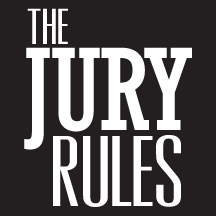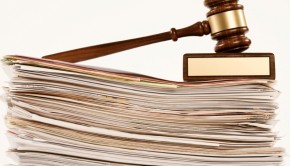Three Specific Techniques to Increase Efficiency at Trial
A. Pre-Admit Exhibits
No judge or jury will ever be upset with you and your opposing counsel for agreeing to pre-admit exhibits. I have even done it when the judge’s pre-trial order did not require it. A few hours spent with opposing counsel on exhibits and stipulations will yield a faster, cleaner trial and happier more receptive jurors.
B. Do Not Over-Foundate Your Exhibits
If documents are not pre-admitted, use Rule 104 to lead witnesses through authenticity and admissibility to increase your efficiency. I have seen many lawyers, even senior lawyers, methodically ask multiple questions to establish a foundation and admissibility for routine documents. This is lethal. When you spend more than one or two questions admitting an exhibit you bog down your examination and bore your jurors. There are two easy solutions: (1) learn exactly what is necessary to admit each exhibit and (2) lead the witness through admissibility questions. Yes, I just advised you to lead even on direct. Rule 104(a) allows you to lead a witness to establish the admissibility of evidence. See TRE 104(a) (“Preliminary questions concerning the… admissibility of evidence shall be determined by the court … In making its determination, the court is not bound by the rules of evidence except those with respect to privilege”); F.R.E. 104 (same). Rule 104 is your license to speed and lead when establishing authenticity and admissibility. Use it every time you need to admit an exhibit.
C. Speed Every Chance You Get
Let’s look at how to use Rule 104 to speed through the business records exception to the hearsay rule.[1] Have you ever gone through all seven questions required to establish the business record exception to the hearsay rule1?:
- I hand you what has been marked for identification Ex.
- Can you identify it?
- What is it?
- Were the records contained in Ex. made by, or from information transmitted by a person with knowledge of the events or conditions recorded?
- Were these records made at or near the time and the events or conditions recorded?
- Were these records made in the normal course of business?
- Were these records kept in the normal course of your business?
If you have ever recited this full litany of questions, you know they take way too long and are mind-numbingly confusing to jurors. About halfway through the third question, your jurors are thinking about getting little Betty Lou to soccer practice, whether they have all the ingredients for tonight’s spaghetti dinner and the myriad of personal issues that populate their life. Whatever your point was going to be (after you established the admissibility of this exhibit) is never going to reach the jury. Their mind is elsewhere. So how do you accelerate your pace and maintain your jury’s attention, without violating the Rules of Evidence. Simple, hit the accelerator and apply Rule 104(a):
- Do you recognize Ex. as an email you wrote and sent to Mr. Jones on December 4, 2004?
- Was this email drafted and kept in the normal course of business by a person with the responsibility to keep it?
Through the power and magic of leading, we just accomplished in two sentences, what most textbooks tell you requires seven. Here is the ultimate test: If you were a juror, which set of questions would you rather hear?
[1] This assumes that you have been unable to comply with Texas Rule of Evidence 902(10), which allows you to use an affidavit to prove up business records. If the records are subject to that rule, then it is not necessary to bring a custodian, or other competent witness to the courtroom to “prove up” those records. It will only be necessary to have an affidavit prepared in compliance with Rule 902(10), properly signed and notarized, and file with the clerk of the court no later than fourteen days prior to the date the trial commences. In addition, there is a provision that the offering party give notice in accordance with the rules of civil procedure of the filing of the affidavit. The requisite form for the affidavit is prescribed by 902(10). The notice and filing requirements are mandatory. Chemical Bank v. Commercial Industries Service Co., 662 S.W.2d 802 (Tex. App.-Houston [14th Dist.] 1983), writ ref‘d n.r.e., 668 S.W.2d 336 (Tex. 1984). (In refusing the writ, the Supreme Court stated that the mandatory requirement of filing fourteen days is not necessary if a witness is called to the stand to testify to the necessary elements of 803(6)).









